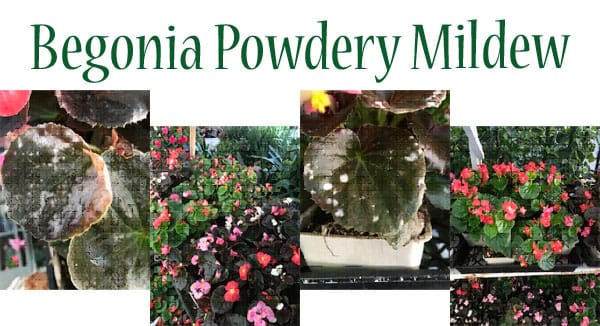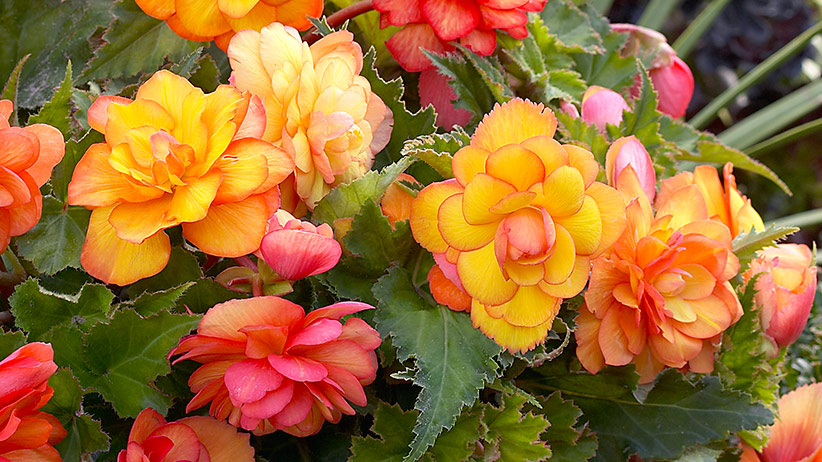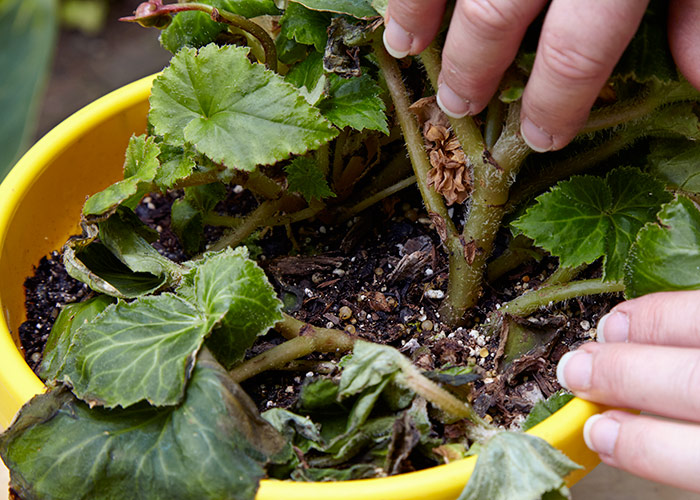Tuberous Begonia Problems
Leaf cuttings can be very successful if done correctly. Very thin stems that cannot support the weight of the leaves.

Begonia Powdery Mildew Green Thumb Nursery Source: www.greenthumb.com
A location in dappled or filtered light also works well but the plants wont survive midday sun or heat.

Tuberous begonia problems. The vine weevil beetle has become the arch enemy of the begonia grower not that the beetle itself causes any damage the problem is that it lays eggs in the compost. Sun-loving etc - this is not absolute. Avoid placing these plants in extremely deep shade of trees or shrubbery for they need lots of indirect light.
However correct tuberous begonia care is essential to get these results. Uneven lighting will cause lopsided seedlings that will develop poorly. Growing Tuberous Begonia Flowers in Pots.
This is sun scorch sunburn on a begonia leaf common at this time of year midsummer when moving plants too quickly from shade into strong sunlight. Tuberous begonias are perennial plants with full-bodied flowers in shades of white yellow orange and red. Susceptible to powdery mildew botrytis and stem rot especially in humid conditions with poor air circulation.
It is toxic is all of us including humans and animals. Common Problems and Solutions for Growing Edible Begonia. The flowers and stems contain oxalic acid and should not be consumed by individuals suffering from gout kidney stones or rheumatism.
Pinch off brown water-soaked stems or leaves. As with other begonia you want to keep the begonia tuberhybrida away from young kids dogs cats and horses. You will need to find a healthy leaf and make sure that you have a sterile cutting board and knife suitable for the job.
Tuberous begonia problems. How to propagate Tuberous Begonia Cuttings. This fungus thrives on plants with little airflow and in areas that are warm and dry with high humidity.
Begonia plants can collapse and die from advanced stem rot diseases. This is because of the flowers are beautiful big and bright - so much so that they almost glow in their different colors. Ragged Holes In Leaves.
When growing tuberous Begonias in pots plant tubers 2-3 inches deep in a well-draining potting mix grouping 3-4 plants per container for an attractive display. Begonia can be affected by a wide range of pests and diseases but with good garden hygiene and healthy soil you can minimize a lot of problems. If your tuberous begonia is not blooming it.
Common Problems with Begonia Tuberhybrida. The underside of the leaves might have some greasy spots. The resulting grubs burrow into the tuber munching away and causing irreparable damage.
8 rows Purchase plants free of the disease. Fortunately you can control both by watering only the soil and not the foliage letting the soil dry between waterings and providing good air circulation. The only problems that youre likely to experience are.
Overall Begonia Tuberhybrida is a healthy plant. One variety of begonia the tuberous begonia is a very attractive plant - maybe one of the most attractive out of all the begonia varieties. Although tuberous begonias are shade-loving plants they also require a bit of morning or late afternoon sunlight.
Tuberous Begonias go dormant in winter lift them before the first frost and store them in a dry place at 45F. Too much water or fertilizer can cause flower drop. Common problems with Tuberous Begonia.
Cottony Tufts On Stems. Sun Scorch Sunburn On Begonia Leaf. Although plants are classified according to their light preferences - eg.
Begonia Propagation Tuberous begonias lose their leaves and stems as winter approaches. White Coating On Leaves. Begonia blossoms have a citrus-sour taste.
Begonia seedlings need even bright light of the type you get with a high-quality grow light. Tuberous Begonias Begonia X tuberosa The leaves flowers and stems are edible. Leaves Covered With Gray Mold.
It will also suffer from temperature stress. How to Grow Tuberous Begonias. On many occasions many problems that tuberous begonias end up experiencing are escalated by poor growing conditions.
While you can start begonias from seed it can be complicated. Exposing the leaves to too much heat. And which it is rarely deadly ingesting enough of it can cause serious health issues including vomiting nausea dizziness to name a few.
The same goes for white mildew patches. Begonia plants that are placed in a room where theres no good airflow will tend to develop diseases caused by pathogens. Several reasons can cause your Begonia to start losing leaves namely.
When this flowering perennial grows under a shady crowded or damp location the foliage is more likely to struggle with powdery mildew. You may also opt to move your begonia outside for a few hours to let it breathe in the fresh air. Begonias need moist well-drained soil and are likely to rot in soggy conditions.
Tubers may rot if soils kept too moist. Begonia stem rot and mildew are caused by the same fungus. Although tuberous begonias need bright filtered sun to produce flowers intense sunlight can burn the plants.
Open the windows of your home to let the airflow in and out. Many failures start with too much shade. Pythium-infected begonias have small discolored roots or tubers and water-soaked blackened stems.
Watch for ealybugs aphids whiteflies slugs and snails. In favored areas of the northern states we often find tuberous begonias basking in full sun at least part of the day but that would never do where summers are hot and dry.

Cultural Problems On Begonias Tuberous Begonia Begonia Plants Source: www.pinterest.com

Pests Diseases Source: www.national-begonia-society.co.uk

How To Grow Tuberous Begonias Garden Gate Source: www.gardengatemagazine.com

Begonia Home Garden Information Center Source: hgic.clemson.edu

How To Grow Tuberous Begonias Garden Gate Source: www.gardengatemagazine.com

Why Are Begonia Leaves Turning Brown Crispy Plant Index Source: www.plantindex.com